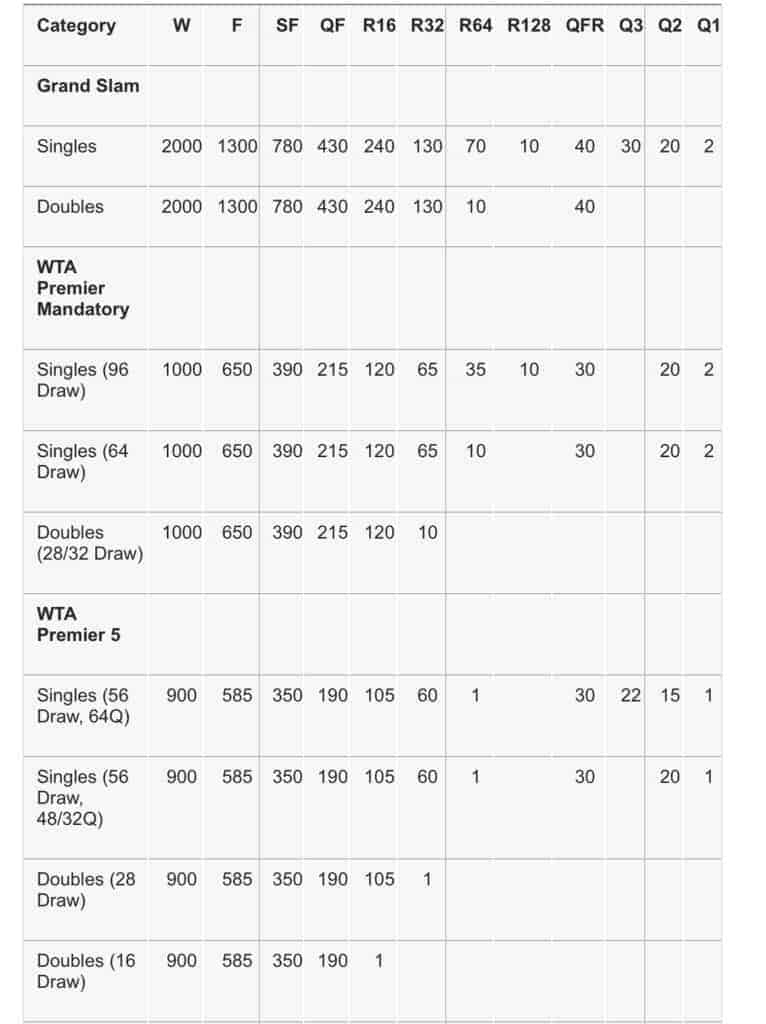

Each season there are announcements of record-breaking prize money tournaments for both men’s and women’s squash. Some people can rely on wild cards but that is a luxury most players do not have.Professional squash is becoming more and more lucrative with the prize money available increasing year after year.
#TABLE TENNIS PRO TOUR WORLD RANKING POINT PROFESSIONAL#
Regardless, starting your professional career can feel overwhelming from the get-go. In fact, most lower-level tournaments do end up having multiple spots not filled in the qualifying after sign-in. That is not to say the qualifying draw will always fill up and you won’t be able to play. It is hard to justify traveling to a tournament without knowing for a fact if that player will be able to compete. The problem when players are starting to play futures (and have no ranking) is that there are often many players in front of them on the list, which can be deflating. In futures, the players in the qualifying and alternate lists need to sign in to the tournament on-site the day before the qualifying starts. If players do not have ATP points, they will often find themselves deep on the alternates page on the acceptance list.Īlternates are the players waiting to get into qualifying. There are 20 main draw spots and 48 qualifying spots. When players sign up for futures, the acceptance list is based on the ATP Ranking. The first (of many) challenging part of playing professionally is being able to play futures events without having ATP points. Anyone can have an IPIN account, even without ATP points, and it is on this platform where players sign up for tournaments. In order to enter these events, players need an IPIN account (a service by ITF), which costs $65 dollars a year. The first step on the journey of becoming a professional tennis player is to play ITF 15Ks and 25Ks, which are called “futures events.” Futures are where players can earn their first ATP points and get their names on the rankings.įutures are small events with a total purse of either 15K or 25K distributed among all the players, which includes both singles and doubles. The points for a tournament will count towards a player’s ranking for a total of 52 weeks following the result.The ATP Points allocation table is as follows: The player’s ranking is based on their best 16 results during a calendar year. If a player is ranked #70 in the world, wins a tournament, and moves to #40, that player is considered to have moved up in the rankings.Ī player’s ranking is determined by their performance in Grand Slams, ATP Tour and Challenger Tournaments, 25K ITF tournaments, and 15K ITF Tournaments. The higher a player’s ranking is (closer to #1), the better. The ATP determines the rules for ATP tournaments and determines the points allocation for all men’s professional events” (ITF World Tennis Tour).Ī professional tennis player’s ability to enter tournaments is determined by their position in the rankings. “The ATP is the governing body of the men’s professional tennis circuits – the ATP Tour and the ATP Challenger Tour.


The ATP rankings list is the gold standard when it comes to men’s tennis. Each one of these events has a different point distribution system. The ATP is in charge of the men’s ATP Tour and Challenger Tour and the WTA takes the lead on the women’s side, putting together the WTA Premier Mandatory, WTA Premier 5, WTA Premier, WTA International and WTA 125K events. The ITF hosts the Grand Slams and the ITF World Tour Circuit for both men and women. The number of points earned by the player depends on the round the player loses. In order to earn ranking points, tennis players must participate in events hosted by the International Tennis Federation (ITF), the ATP, and the WTA. Tennis rankings work based on a points system that adds up players’ 18 best results in the previous 52 weeks. Because tennis is an individual sport, players do not get hired by a team or club (like the NBA, NFL, NHL, Soccer/Football Clubs, etc) so it can be quite difficult to understand the path players need to take in order to reach the top of the rankings. When you are a professional tennis player, you often get asked “how do you become a professional tennis player?”.


 0 kommentar(er)
0 kommentar(er)
